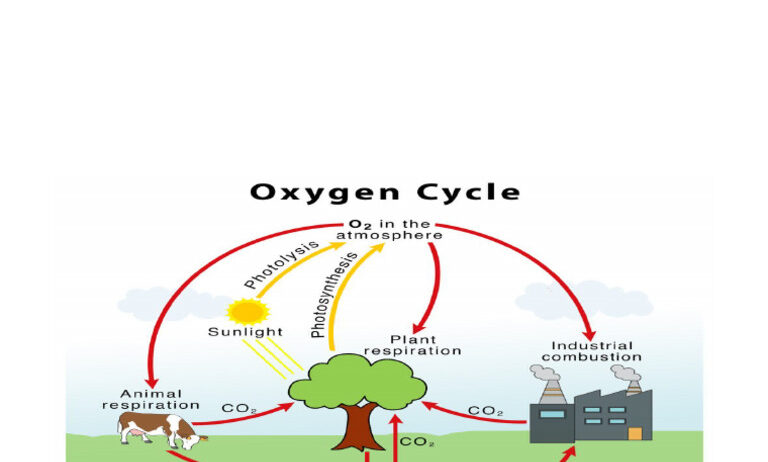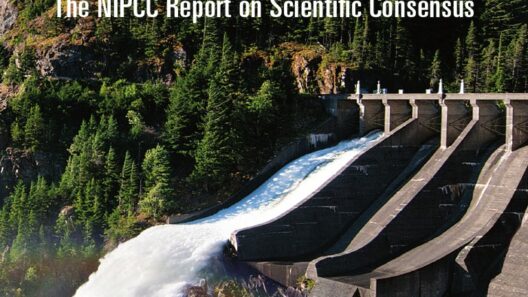Biochemical cycles represent the intricate and dynamic processes that govern the transfer of matter and energy within ecological systems. Understanding these cycles is essential in the context of global warming, as they are profoundly affected by increasing temperatures, altering the equilibrium that has sustained life on Earth for millennia. This exploration illuminates the interaction between biochemical cycles and climate change, revealing the multifaceted implications of human activities and natural phenomena.
At the core of ecological interactions are the key biochemical cycles: the carbon cycle, the nitrogen cycle, the phosphorous cycle, and the water cycle. Each cycle operates within a measured framework, facilitating the exchange of essential elements among organisms, the atmosphere, and the lithosphere. Deviations from these cycles, often exacerbated by anthropogenic influences, lead to profound environmental ramifications.
The carbon cycle illustrates the dynamic interchange of carbon among the atmosphere, terrestrial biosphere, oceans, and sediments. In a natural state, it maintains atmospheric carbon dioxide levels essential for life. However, since the Industrial Revolution, massive carbon emissions from fossil fuel combustion have accelerated the accumulation of greenhouse gases in the atmosphere. The resultant increase in average global temperatures fosters more frequent and severe weather events, such as floods and droughts, disrupting the predictable flow of carbon through ecosystems. Notably, thawing permafrost is releasing ancient carbon reserves, further intensifying this feedback loop.
Furthermore, the oceanic component of the carbon cycle demonstrates distressing trends under rising temperatures. Oceans, which serve as vital carbon sinks, are absorbing increased atmospheric carbon, leading to ocean acidification. This alteration in pH disrupts marine life, particularly organisms reliant on calcium carbonate, such as corals and shellfish. The progressive depletion of these taxa undermines marine biodiversity and the economy of communities dependent on fishing.
Equally significant is the nitrogen cycle, which involves the conversion of atmospheric nitrogen into forms usable by living organisms. Human activities, notably the industrial synthesis of fertilizers, have exponentially increased nitrogen inputs into ecosystems. While this initially enhances agricultural productivity, the downside manifests in several forms. Excess nitrogen runoff into aquatic systems leads to eutrophication, an over-enrichment of nutrients that causes harmful algal blooms. These blooms generate hypoxic conditions, resulting in dead zones devoid of marine life. Such alterations disrupt food webs, illustrating the fragility of interconnected life systems.
Moreover, global warming exacerbates forces of nitrogen loss from ecosystems. Elevated temperatures affect microbial processes that govern nitrification and denitrification, potentially releasing excess nitrogen back into the atmosphere in the form of nitrous oxide, a potent greenhouse gas. The alteration of this cycle not only affects food production but also contributes to the very problem of climate change, thereby illustrating a complex, interwoven tapestry of ecological implications.
The phosphorous cycle, although less influenced by atmospheric processes, remains critically altered by human activity. Phosphorus, a fundamental nutrient for life, is primarily sourced from mining and agriculture. The excessive application of phosphate fertilizers leads to similar consequences as nitrogen, inducing eutrophication and subsequent biodiversity losses. Additionally, phosphorus scarcity in some regions suggests a future conflict over resource access, further complicating the interaction between ecological integrity and human necessity.
The water cycle, too, is inextricably linked with global warming. Rising temperatures accelerate evaporation rates, altering precipitation patterns and leading to more intense and unpredictable weather systems. This not only poses risks to freshwater availability but also disperses pollutants more readily across landscapes. The severe droughts followed by torrential downpours create conditions conducive to soil erosion and desertification, further destabilizing local ecosystems.
In summation, biochemical cycles are experiencing unprecedented stress as a result of global warming, revealing a reality fraught with implications for both natural ecosystems and human endeavors. The interconnectedness of these cycles illustrates that no single environmental issue can be viewed in isolation. Each alteration reverberates through the network of life, amplifying the effects of climate change in compound ways.
This emerging paradigm necessitates a recalibration of how society addresses environmental concerns. Comprehensive strategies must adopt a holistic approach, recognizing the symbiotic relationships within biochemical cycles. Efforts aimed at sustainability, restoration, and conservation must foster resilience against the encroaching threats posed by climate change. Policymakers and stakeholders must prioritize adaptive measures that mitigate disruptions, supporting both healthy ecosystems and human wellbeing.
Ultimately, the fascination with biochemical cycles lies not only in their complexity but in their profound significance to the health of our planet. They are the lifeblood of Earth’s ecosystems, and their disruption invites scrutiny and urgent action. As stewards of the environment, it is imperative to cultivate awareness of these cycles and advocate for practices that promote their stability. Recognizing the fragility of these systems is essential in ensuring a sustainable future, as the interrelationship between climate change and biochemical cycles is not merely a scientific inquiry but a moral imperative. The time to act is now.






